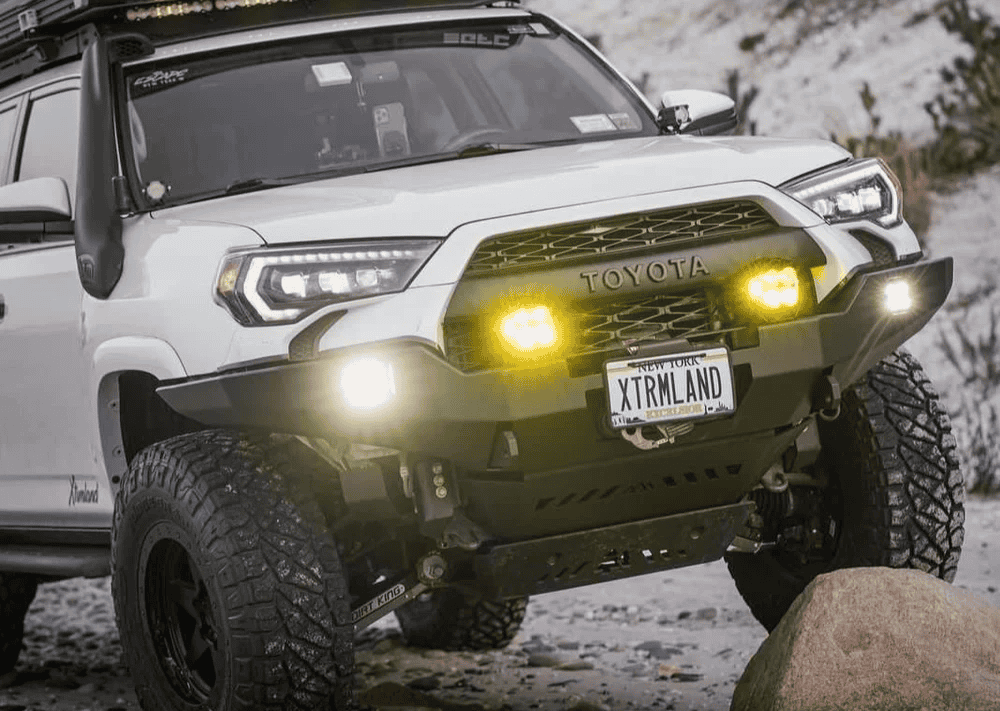Overland Vehicles

A cross country overland truck is built for weeks on the road, not just weekends. The goal is consistent performance across interstate miles, gravel county roads, forest service tracks, and occasional rocky connectors. Reliability comes from selecting a proven platform, keeping weight under control, and matching components to realistic terrain.
Start with a chassis that has wide parts availability and a healthy dealer network. Full size pickups and popular midsize platforms shine because service access across multiple states is easier. Aim for a conservative lift that preserves factory geometry. Tall stance looks great, but long days demand neutral handling, proper alignment, and predictable braking.
Tire choice sets the tone. All terrain tires with strong sidewalls handle varied surfaces and are quieter than mud terrain options on highway runs. Choose a load rating that matches actual weight with a margin to spare. Carry a full size spare mounted where it is easy to reach, along with a plug kit and compressor.
Look for a drivetrain that stays cool while towing grades and crawling slow sections. A low range transfer case adds control on steep or loose climbs, while a locking differential is a safety net when traction gets thin. Automatic transmissions with external coolers reduce heat on long climbs. If you plan winter routes, factor in heated mirrors, block heaters, and cold weather fluids.
Range is freedom on a cross country route. The most dependable strategy is simple math with real world numbers. Estimate realistic miles per gallon at travel weight and speed, then build fuel stops for worst case wind and elevation. An auxiliary tank adds security without carrying loose cans, while a transfer pump and spill proof fittings keep things tidy.
Power management keeps cameras, navigation, and camp essentials running. A dual battery system with an onboard battery monitor prevents surprises. Add a DC to DC charger tied to the alternator for consistent charging during driving days. Solar helps hold a charge at camp but should be treated as a complement to alternator charging on a moving trip.
Recovery plans should be boring in the best way. The must have list includes a rated tow strap, soft shackles, traction boards, a jack that works on uneven surfaces, and a compact shovel. Choose recovery points that are frame mounted and tested. Practice simple recoveries in a safe lot before departure so the gear feels second nature.
Carry a curated spares kit based on your model history and route. Belts, hoses, fuses, fluids, and a tire valve kit solve common road trip issues. Include tools that actually fit your truck, plus a headlamp and nitrile gloves. For fuel, plan stops around range not luck. In wide open states, set your habit to refuel by half tank when services stretch out.
Camp systems should be uncomplicated. Think weatherproof storage, a sleeping setup that deploys in minutes, a galley you can run in wind or rain, and water capacity sized for your longest gap between towns. Keep heavy items low and forward. Use drawers or cases with clear labels so you are not digging for essentials at midnight.
Lighting matters for camp and night driving. Amber fog lights reduce glare in dust and snow. Modest scene lighting around the bed area makes setup quick without lighting up the forest. Inside the canopy or topper, task lighting turns packing into a calm routine.
Navigation and communication tie the journey together. Run offline maps with layered sources so you can cross reference public land boundaries, road closures, and alternate connectors. A satellite communicator provides weather reports, two way messages, and an SOS function. In convoy travel, a handheld radio keeps chatter off your phone.
Pick a sleep system that you can set up in less than five minutes. A simple platform with a quality mattress or a well insulated rooftop option both work when executed cleanly. Cooking should be stable in wind, with a heat shield and a surface that cleans up fast. Store fuel and food apart, and keep recovery gear on the outside or in a dedicated bay.
The best cross country setups feel as easy on day twenty as they did on day one. That comes from quiet tires, balanced suspension, smart airflow for cooling, and a cabin organized for long hours. Add small comfort touches like lumbar support, a steering wheel cover that improves grip, and a dash mount that eliminates wobble.
Think through paperwork and logistics too. Keep digital copies of registration and insurance, a simple maintenance log, and an inspection routine for each morning. Rotate drivers, hydrate, and pace the day around sunrise and sunset to avoid wildlife hours. A steady rhythm beats a sprint every time.
If you want a builder that understands long range travel and the realities between interstates and dirt, explore our Overland rigs. For tailored suspension, storage, and power systems that match your itinerary, see our Custom overland upfit. Curious about how we approach design and handoff, read Why choose OZK Customs to see how we build for real use.
We design and deliver complete adventure trucks that carry smart weight, stay quiet on the highway, and remain confident when pavement ends. From chassis selection and range planning to water, power, and secure storage, our team builds to purpose and tests every system before keys change hands. Tell us where you are going and what you need to bring, and we will shape a rig that makes coast to coast travel feel effortless.
Ready to build a truck that cruises the interstate and thrives on remote tracks? Tell us your route, range goals, and must haves. OZK Customs will spec the chassis, suspension, storage, and power to match your itinerary, then deliver a turn key overland build that feels dialed from day one.
ADDRESS:
6159 E Huntsville Rd, Fayetteville, AR 72701
PHONE:
(479) 326-9200
EMAIL:
info@ozkvans.com